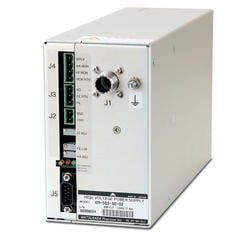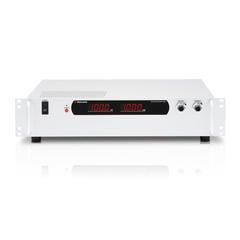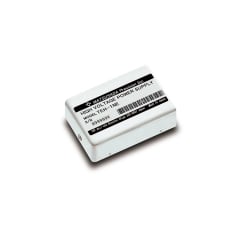What is X-Ray Fluorescence?
When a material is irradiated with high-energy X-rays, inner-shell electrons within its atoms can be ejected. To regain stability, an electron from a higher-energy outer shell fills the vacancy. This transition releases an X-ray with an energy level equal to the difference between the two shells. This emission is known as "X-ray fluorescence" (XRF).
The difference in energy between the inner and outer shells is unique for each element. Therefore, the energy of X-ray fluorescence is unique for each element. In addition, the energy is greater for shells that are closer to the nucleus. So, K shell > L shell > M shell. X-ray fluorescence that is emitted during a transition from the L shell to the K shell is called Kα rays, and the X-ray fluorescence that is emitted during a transition from the M shell to the K shell is called Kβ rays.
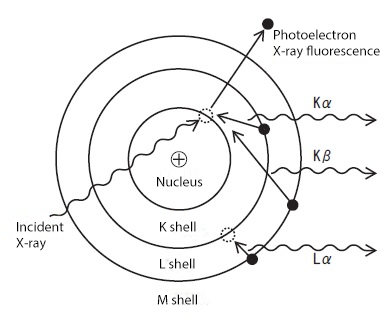
Principle of Measurement
Because the energy of fluorescent X-rays is unique to each element, analyzing the fluorescence spectrum of a sample allows for the identification of its constituent elements (qualitative analysis). Furthermore, the intensity of the spectrum is proportional to the element's concentration, enabling the determination of how much of each element is present (quantitative analysis).

Figure 2 Fluorescent X-ray spectrum (Sample)
Analysis Equipment
X-ray fluorescence analyzers can be broadly divided into two categories. One type are wavelength dispersive X-ray fluorescence analyzers (WDX), which collimate X-ray fluorescence with Soller slits (extracting nearly parallel fluorescence emissions) and use spectroscopic crystals to take spectroscopic measurements. They have high detection sensitivity and high energy resolution, which makes them suitable for cases where a greater level of detection accuracy is required. The other type is energy dispersive X-ray fluorescence analyzers (EDX), which are usually equipped with a semiconductor detector. Since the semiconductor detector itself has a function to analyze energy, the features of this type include compact size, short analysis time, and simultaneous multi-element analysis.
The stability and low noise of the high voltage power supply are critical for ensuring the accuracy and repeatability of both WDX and EDX systems.
Quantitative Analysis
Quantitative analysis is a method of determining the content of elements in a sample. For X-ray fluorescence analysis, this method is broadly divided into two categories: the calibration curve method and the fundamental parameter (FP) method.
Calibration curve method: This is a general method for determining the concentration of a substance in an unknown sample by comparing the unknown to a set of standard samples of known concentration.
FP method: This method is used to devise a theoretical estimate of the composition of a sample based on the intensity of X-ray fluorescence from an unknown sample that is measured, based on the principle of the generation of X-ray fluorescence. The FP method is used to measure samples that do not have a calibration curve or whose composition is unknown.
Sample Preparation Method
Although X-ray fluorescence analysis allows a variety of samples, such as solids, liquids, and powders, to be analyzed non-destructively, there is a possibility that the analysis results may differ depending on the shape of the sample or how the sample is placed in the container. (Figure 3) Therefore, the following points are important when preparing samples.
Points for preparing samples
- Prepare homogeneous samples
- Prepare the standard sample and each sample to be measured in the same way
- Avoid contamination
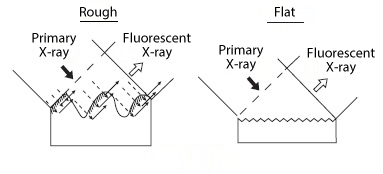
(a) Bulk sample
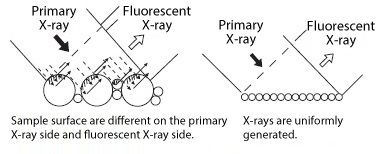
(b) Powder sample
Figure 3 Effects of specimen surface and granularity (particle size)
Regulations for Various Hazardous Substances
Attention is paid to measures against hazardous chemical substances as an environmental issue. RoHS directives and other regulations are emerging in order to prevent the diffusion of hazardous chemical substances. With such trends, X-ray fluorescence analyzers (XRF) that can perform screening analyses quickly and easily are required.
* Revisions may be made to the legal interpretations of these regulations. The statements here do not represent the positions of official institutions. Be sure to refer to the original text of applicable laws and regulations.
RoHS Directive
The RoHS (Restriction of Hazardous Substances) was issued by the EU in 2003, and came into force in July 2006. Therefore, in order to ship products to EU member countries, the content of six types of hazardous substances specified in RoHS must be less than the specified values. (Table 1)
X-ray fluorescence analyzers (XRF) are non-destructive and can perform measurements very quickly, which makes them useful for screening hazardous substances. In addition, XRF can be used to perform both qualitative and quantitative analyses. Hexavalent chromium is detected as total chromium, and PBB/PBDE are analyzed as total bromine.
| Material | Regulation value |
|---|---|
| Lead (Pb) | 1000ppm or less |
| Mercury (Hg) | 1000ppm or less |
| Cadmium (Cd) | 100ppm less |
| Hexavalent chromium (Cr6+) | 1000ppm or less |
| Polybrominated biphenyl (PBB) | 1000ppm or less |
| Polybrominated diphenyl ether (PBDE) | 1000ppm or less |
| Bis(2-ethylhexyl) phthalate (DEHP) | 1000ppm or less |
| Butyl benzyl phthalate (BBP) | 1000ppm or less |
| Dibutyl phthalate (DBP) | 1000ppm or less |
| Diisobutyl phthalate (DIBP) | 1000ppm or less |
Soil Contamination Countermeasures Act
The Soil Contamination Countermeasures Act came into effect in February 2003 in order to prevent damage to health due to soil contamination and to gain a better understanding of contamination conditions. Among the specific hazardous substances that are specified in this law, the components of Class 2 heavy metals can be analyzed with X-ray fluorescence.
The specified substances and their reference values are shown in Table 2. An official quantification method has been established only for total arsenic and total lead (JIS K 0470).
| Material | Limit standard |
|---|---|
| Lead (Pb) | 150 mg/kg |
| Cadmium (Cd) | 150 mg/kg |
| Hexavalent chromium (Cr6+) | 250 mg/kg |
| Arsenic (As) | 150 mg/kg |
| Mercury (T-Hg) | 15 mg/kg |
| Selenium (Se) | 150 mg/kg |
Regulations Regarding Toys
Toy safety is regulated by Part 3 of the EU Toy Safety Directive (EN71 Part 3). It stipulates regulations regarding the oral intake of heavy metals in toys that are designed for children aged 6 or younger, and that could be placed in the mouth or swallowed. The target metal elements and their regulation values are shown in Table 3.
In Japan, Toy Safety Standards (ST-2002) have been established, and the regulation value for lead (90 ppm) was added in May 2006.
These ST standards include the Food Sanitation Act, EN71, and other regulations as inspection items.
Table3 Regulations Regarding Toys
| Material | Regulation value | |
|---|---|---|
| Excluding clay and finger paint |
Clay and finger paint | |
| Lead (Pb) | 90 ppm | 90 ppm |
| Mercury (Hg) | 60 ppm | 25 ppm |
| Cadmium (Cd) | 75 ppm | 50 ppm |
| Hexavalent chromium (Cr6+) | 60 ppm | 25 ppm |
| Barium (Ba) | 1000 ppm | 250 ppm |
| Arsenic (As) | 25 ppm | 25 ppm |
| Selenium (Se) | 500 ppm | 500 ppm |
| Antimony (Sb) | 60 ppm | 60 ppm |
Halogen-Free Measures
Halogen compounds have been used widely in electronic materials and other products as fire retardant materials. However, because they generate harmful gas when burned (dioxin in particular can be produced at high temperatures) and for environmental concerns such as preventing the destruction of the ozone layer, there is now a strong need to switch to halogen-free materials. However, there is no clear definition of "halogen-free".
For example, the Japan Electronics Packaging and Circuits Association (JPCA) has established regulation values for halogen content in printed wiring as a JPCA standard (Test Method for Halogen-Free Materials JPCA-ES01). It defines the total amount of chlorine (Cl) and bromine (Br) contained in epoxy resin and phenolic resin used in printed wiring boards. (Table 4)
This standard has also been adopted for IEC standard 61249-2-21 (International Electrotechnical Commission) and IPC standard 4101B (Association Connecting Electronics Industries).
Table4 Total amount of chlorine and bromine in the JPCA standard
| Material | Limit standard |
|---|---|
| Chlorine (Cl) | Chlorine (Cl): ≤ 900 ppm, Bromine (Br): ≤ 900 ppm, Total (Cl + Br): ≤ 1500 ppm |
| Bromine (Br) |
Related Technical Articles
Recommended products
Matsusada Precision delivers mission-critical high voltage power solutions for analytical X-ray applications, including XRF and XRD. Our X-ray power supplies and high voltage power supplies are engineered for the exceptional stability, low ripple, and compact design required for high-precision analysis.



